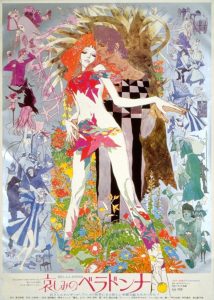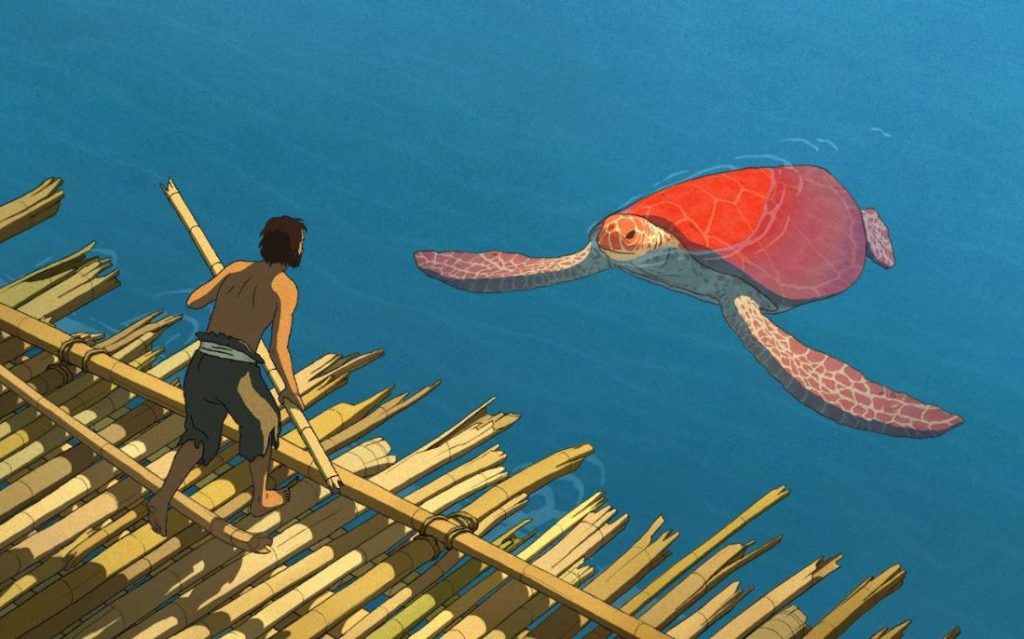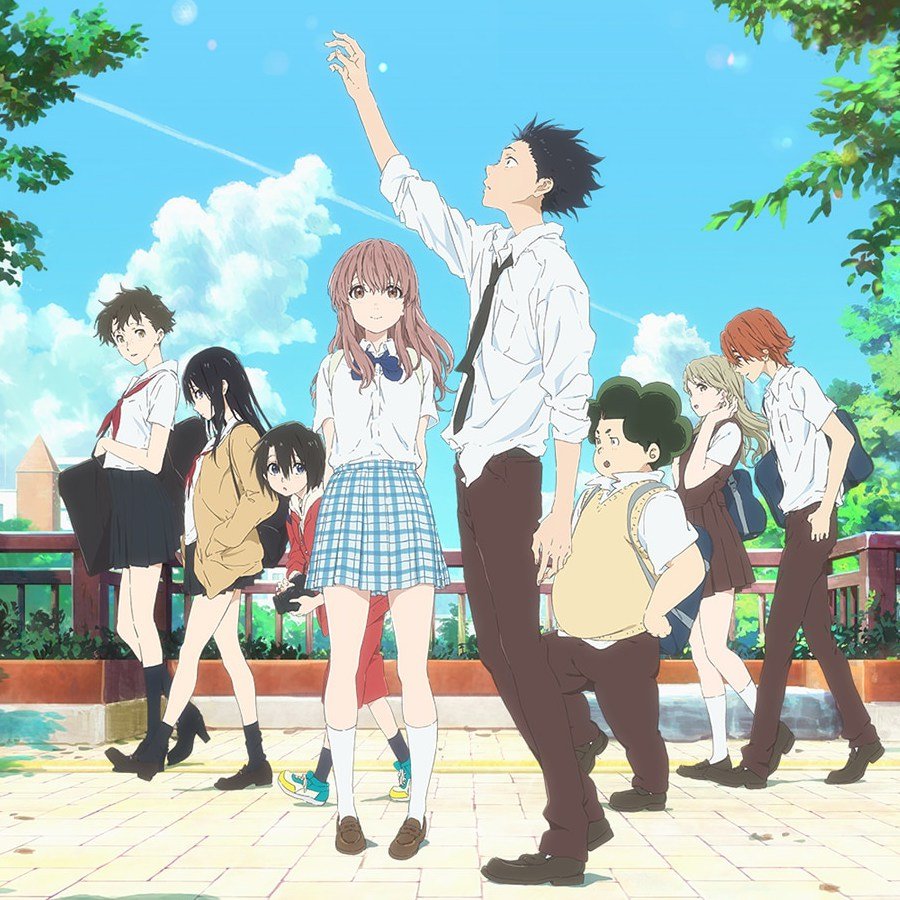Leeds International Film Festival Animation Day 2016 Coverage
 This year marks my second chance to attend the anime day at the Leeds International Film Festival. This year also marked a fairly major change for the anime day, as instead of being focused on Japanese animation the section has been renamed the ‘Animation Day’ so that it could include animated works from around the world. Like previous years, the films on offer for 2016 were fairly big titles and were as follows:
This year marks my second chance to attend the anime day at the Leeds International Film Festival. This year also marked a fairly major change for the anime day, as instead of being focused on Japanese animation the section has been renamed the ‘Animation Day’ so that it could include animated works from around the world. Like previous years, the films on offer for 2016 were fairly big titles and were as follows:
Kizumonogatari Part 1 -Tekketsu-
Kizumonogatari Part 2 -Nekketsu-
Belladonna of Sadness
The Red Turtle + Father and Daughter short
Psychonauts, the Forgotten Children
A Silent Voice
For the record, I am not providing coverage of Psychonauts due to it not being Japanese in origin. The Red Turtle will have shorter coverage for a similar reason; I’ve only included it at all due to Studio Ghibli’s involvement.
Before we dive into the anime, let’s first talk about the event itself. This year’s Animation Day was once again held in the Leeds Town Hall, which is a fantastic venue for this kind of event. The staff were friendly and helpful and I never had any issues getting around the venue to where I needed to be. A complaint of mine from last year was also addressed. Last year I complained that the breaks for lunch and dinner weren’t long enough to actually find food (especially for those who might not live in Leeds), and this year the event did offer longer breaks. I’d had the foresight to pack some food for dinner this year anyway, but discovering that I could have had the freedom to leave the town hall and buy something was pleasing to hear.
My only major complaint this year involved actually getting to the venue. This isn’t really the fault of the film festival, but on the Animation Day there was a race for charity happening and the finish line was right in front of the town hall. Due to this it was near impossible to work out if I could access the front of the town hall to get into the venue or even where I could cross the road to get to it (due to the fact it was difficult to see where the course for the race was going). I eventually walked around the back of the nearby library and plotted a course from there. Once I got nearer the town hall I battled my way through spectators and realised that the front of the town hall was open for the festival. In hindsight I’m glad that I’d left home 10 minutes earlier than originally planned that morning, otherwise I would have missed the beginning of Kizumonogatari Part 1.
The only thing I wish we’d had from the organisers of the film festival was better signage or some comments on the social media regarding where attendees were meant to go to get into the venue. I personally know the area so I could navigate around the issue okay, but if anything like the charity race clashes again with Animation Day I do hope that the organisers can deal with it a bit differently. With that said, onwards to the films!
Kizumonogatari Parts 1 & 2

To start off the day we were treated to a double bill of Kizumonogatari Parts 1 and 2. I’ve previously watched the first few episodes of Bakemonogatari but I’ve otherwise never put much time into the Monogatari series despite knowing how well loved it is, so these movies were a first for me. The movies act as a prequel to Bakemonogatari so no previous knowledge of the Monogatari series is required, which was good news for people like me!
Kizumonogatari tells the story of Koyomi Araragi, a second year high school student just living his days peacefully. One day he befriends a female classmate named Tsubasa Hanekawa, who tells him a rumour about a blonde vampire that has been sighted around the town. Later that day as he walks home after buying some books, Araragi hears someone crying out for help and stumbles upon a mostly decapitated, yet somehow still alive, blonde haired woman. It turns out that this woman, known as Kiss-Shot Acerola-Orion Heart-Under Blade (Kiss-Shot for short), is the vampire from the rumours and she wants Araragi’s blood so that she can recover from her injuries!
Araragi agrees to give Kiss-Shot all of his blood despite the fact it means his death, but instead of dying it turns out that Kiss-Shot has turned Araragi into a vampire too! She promises that she’ll turn him back into a human later but he must first help her hunt down 3 powerful vampire hunters and take back the limbs they stole from her. Using his newfound vampire powers, Araragi fights to reclaim the limbs and to one day regain his normal everyday life.
The first part of Kizumonogatari spends the majority of its hour runtime simply on setup and some character development, which works nicely because it doesn’t feel like it drags on too long nor rushes the plot along too quickly. That said, it would have been somewhat awkward if Part 2 hadn’t also been shown because you’d have been left feeling like Part 1 was a bit of a waste – but thankfully that wasn’t the case.
Part 2 focuses a lot more on the action side of things and sees Araragi battling it out with the vampire hunters, while also offering development for his friendship with Hanekawa. Like the first part it only has a runtime of just over an hour, but a lot gets done and the action on offer is simply superb. There are moments where the movie slows down and I got a bit disconnected from it but this is a problem I’ve found with the Monogatari series in general, so I don’t believe it’s the fault of these movies alone.
Like the main series, Kizumonogatari is being handled by studio SHAFT (Madoka Magica, March Comes in Like a Lion) and has a blend of 3D backgrounds and props while the characters are still very 2D. It’s an interesting mix but one that seems to work quite well, although I will mention that the world of Kizumonogatari is very dark and made up of variations of white, grey, brown and black. It’s not a terrible thing but I almost wish there had been a tad more colour on offer to shake things up.
The music for the two parts has been handled by Satoru Kosaki, who has worked on the Monogatari series since the beginning. The soundtrack is full of delicate pieces but also much louder, more compelling tracks for the action scenes. It has to be said that out of everything I watched for the Animation Day, the soundtracks for Kizumonogatari Parts 1 and 2 were the best.
Overall Kizumonogatari works as a solid starting point for anyone not familiar with the Monogatari series. It won’t feel complete until I’ve seen the third part, but the second part made for a good enough stopping point. Now I’m just eagerly awaiting more of it. It’s worth noting for people who want more of Kizumonogatari, like me, that the original light novel has been released in English thanks to Vertical.
Score: 8/10
Belladonna of Sadness
 Belladonna of Sadness is a movie from 1973 that was inspired by the French novel Satanism and Witchcraft written by Jules Michelet. Now this is an 18 rated film and features more adult content than I wish to remember, but I don’t want to talk about that per se. I’d rather offer a little bit of background information and then explain why the movie didn’t really work for me as a viewer.
Belladonna of Sadness is a movie from 1973 that was inspired by the French novel Satanism and Witchcraft written by Jules Michelet. Now this is an 18 rated film and features more adult content than I wish to remember, but I don’t want to talk about that per se. I’d rather offer a little bit of background information and then explain why the movie didn’t really work for me as a viewer.
The story is based around a woman known as Jeanne. On her wedding night, Jeanne is forced into a ritual deflowering by the local baron and some of his staff members. After this event she begins to see a spirit who leads her to eventually gain the power to overthrow the local baron and those who caused her so much suffering.
What Belladonna of Sadness is trying to do, outside of the blatant sex and sexual references, is tell the story of a woman going through suffering and then becoming empowered from her experiences. I think that back in 1973 this premise was probably much more powerful and thought-provoking than it is now. It’s not merely the fact that this scenario is a bit outdated, it’s also that I think other media and films have used similar ideas and simply presented them better.
I have to admit I’m not someone who likes heavily artistic films and Belladonna of Sadness goes so far in its approach to – frankly – crazy animation that it was difficult to keep track of what was happening and not be thrown out of the story. The animation does look really pretty as it has a lot of watercolor images but the constant and graphic sexual content being depicted was enough to put me off. I don’t think I was the only one who felt that way either, as the overall feeling in the hall was quite muted. When the credits finally rolled, the friend I’d watched it with and I looked at one another completely bewildered as to what we’d just experienced.
Overall I think Belladonna of Sadness was trying to make a statement, but that point was probably much clearer back in the 1970s as opposed to the present. I also admit to potentially being the wrong audience for this type of film because it isn’t the kind of thing that I’d usually go out of my way to watch. If you find yourself intrigued by my write-up then certainly give it a watch, but as it stands I don’t recommend it.
Score: 4/10
The Red Turtle
 The Red Turtle is a French animated film directed by Michael Dudok de Wit, who was behind the Father and Daughter short back in 2000 – which won many awards at the time. The Red Turtle was co-produced between Wild Bunch and Studio Ghibli. The involvement of Studio Ghibli is why I’m covering the movie for this article, but frankly it seems as though their involvement with it was fairly small.
The Red Turtle is a French animated film directed by Michael Dudok de Wit, who was behind the Father and Daughter short back in 2000 – which won many awards at the time. The Red Turtle was co-produced between Wild Bunch and Studio Ghibli. The involvement of Studio Ghibli is why I’m covering the movie for this article, but frankly it seems as though their involvement with it was fairly small.
The film tells the story of a man, who remains nameless, that gets shipwrecked and wakes up on a deserted island. After he has explored and gathered his bearings, the man decides to build a raft to get himself off the island. It’s not long until the raft is complete and he sets sail, but once reaching a certain distance from the island, the raft is destroyed by a red turtle. The man tries again to make a raft and leave the island but once more the raft is broken apart by the turtle. Is our protagonist destined to never leave the island?
It’s difficult to write about The Red Turtle because the movie has no dialog at all, so saying too much about the story would likely spoil someone’s enjoyment of it. However, while the plot is lacking in complexity, that doesn’t mean the movie isn’t deeply emotional – because it is. On the contrary, The Red Turtle does all the right things to make you care about this man and gives him a lot of character despite the fact that he never speaks. It’s very interesting and the mark of a good film.
The biggest disappointment that I had with The Red Turtle is that it didn’t seem to have great deal of work put into it by Studio Ghibli animation wise. The protagonist and much of the world around him were presented in CGI animation, but even when there was some traditional hand drawn animation, it didn’t scream Ghibli. This doesn’t make it bad by any means but it is worth noting for anyone who was going into it hoping for something more closely resembling a Ghibli movie.
Overall The Red Turtle is emotional and has a solid idea behind it. It’s not quite what I was expecting but that certainly doesn’t mean I didn’t enjoy it. Perhaps it’s not something that I’d watch again, but I and the audience watching it (judging by the round of applause afterwards!) had a good time.
Score: 7/10
A Silent Voice

The last film of the night was undoubtedly the best of the day. The 2016 Animation Day came to a close with a showing of A Silent Voice by Kyoto Animation, a film based on an award winning manga (which is published by Kodansha and is also on Crunchyroll).
The story centers around Shoya Ishida, who back in elementary school bullied a deaf classmate of his, Shoko Nishimiya. Now in high school and isolated by his classmates due to his past sins, Shoya plans on committing suicide. However, one of the things he wants to do before ending his life is to track down Shoko in order to apologise for what he did as a child. After meeting Shoko and realising that she’s still suffering due to his past actions, Shoya is determined to finally put things right and works hard to be a good friend to her.
The most important part of A Silent Voice is that it isn’t just about Shoko’s suffering, it’s about the suffering that both of them go through. After Shoko eventually transferred schools because of the bullying, her former classmates blamed and started to pick on Shoya despite the fact that they were also responsible for what happened to Shoko. All throughout middle school and high school Shoya continued to be isolated as people learnt what he’d done back in elementary school.
While the core of the story is about the relationship between Shoko and Shoya, it also delves into the feelings of Shoko and Shoya’s former classmates. Shoya wishes to reconnect Shoko with their old classmates that she didn’t have the chance to become friends with back then. As he does so, he discovers how much fun it is to have friends and how much better the world is for it.
I also really want to mention just how wonderful it is to have an anime that features a deaf character and to have multiple characters who have learned sign-language because of her. The original manga series was supported by the Japanese Federation of the Deaf due to how well it covered the subject, and Kyoto Animation have carried over that quality very well. I don’t know much about sign-language but from what is shown in the movie it seems accurate enough to me. I don’t know anyone who is deaf either, but from the way Shoko is portrayed, I believe it’s realistic to how someone who is deaf might act.
The animation on offer was beautiful, although perhaps not that much better than Kyoto Animation’s usual TV output. I think I’ve been spoilt by the efforts of this studio and the wonderful anime they’ve created over the years because I was left feeling like the animation for A Silent Voice just wasn’t that special. Don’t get me wrong – it’s still heads and tails above other animation studios, it just didn’t surpass the usual Kyoto Animation standards.
Music was handled by Kensuke Ushio, who also worked on the music for Ping Pong The Animation. The soundtrack on offer seemed like a bit of a limited selection despite the fact the official CD release comes in at a massive 45+ tracks. I think perhaps the real problem here is that the scores just didn’t stand out, or because there were many piano pieces they all blended into one another in my head. It’s not a bad soundtrack but it’s not necessarily as good as I’d been hoping for (and led to believe) going into this showing.
It’s interesting that overall I found myself in a similar situation to the previous film festival where the last movie of the day was truly the best. A Silent Voice is truly breathtaking in a way that no other film that day was. It’s dealing with very sensitive issues and did so extremely well by approaching it head-on but in a gentle, realistic manner. Anime Limited are planning on giving the movie a wider theatrical release in the future, so if it turns up near you I urge you to check it out.
Score: 9/10

